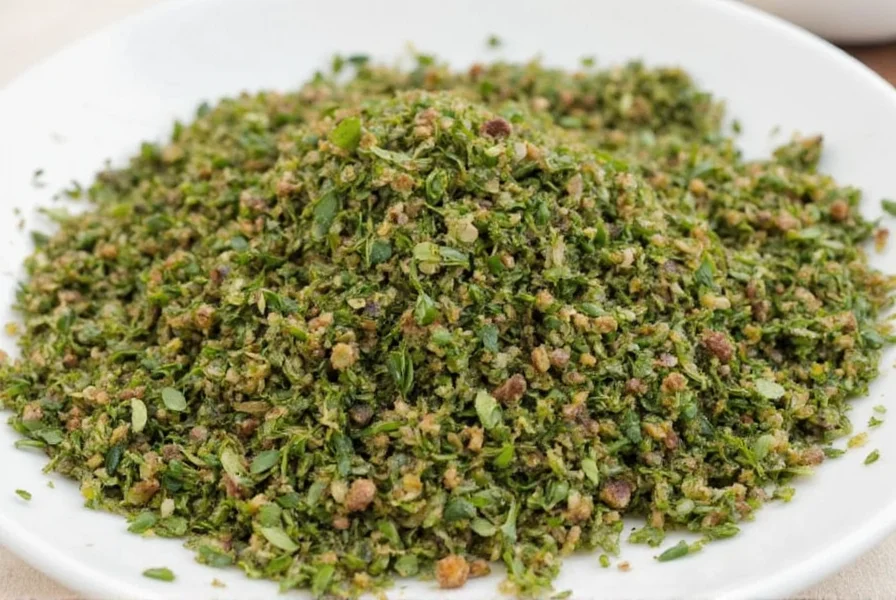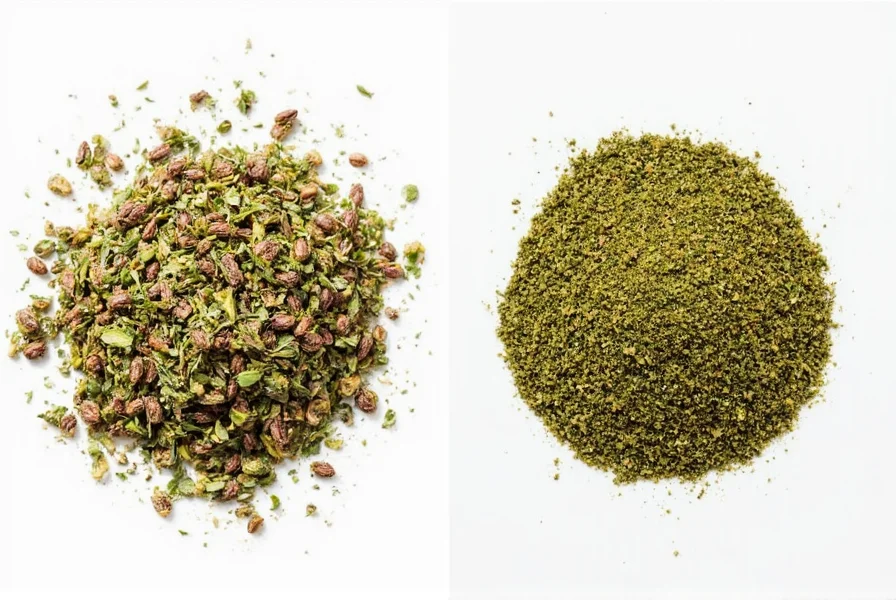The Aromatic Showdown Begins
If you've ever stood in front of a spice rack wondering whether it's worth buying both oregano and Greek oregano, you're not alone. The confusion is real — and warranted! At first glance, they seem almost identical. But dig a little deeper, and you'll find subtle yet significant differences that can change the flavor of your dish entirely.
So what's the deal? Are they just marketing gimmicks with different labels? Or are there actual botanical, taste, and culinary distinctions between them?
In this article, we're breaking down the ultimate herb duel: Oregano vs Greek Oregano. Spoiler alert: one might be better suited for your Italian pasta, while the other could steal the show at your next Greek feast!
What Is Oregano Anyway?
Oregano (Origanum vulgare) is a staple in many kitchens around the world. Known for its robust flavor and aromatic leaves, it's a member of the mint family and widely used in Mediterranean, Mexican, and American cuisines.
- Scientific name: Origanum vulgare
- Flavor profile: Earthy, slightly bitter, with a peppery kick
- Common uses: Tomato sauces, pizza, grilled meats, soups, stews
Regular oregano comes from several subspecies and varieties, including the common sweet marjoram hybrid. It's often more accessible in supermarkets and is known for being a versatile herb that stands up to long cooking times without losing its potency.
How Greek Oregano Stands Out
Greek oregano (Origanum vulgare subsp. hirtum), sometimes called "true oregano," is one of the most prized types of oregano, especially in traditional Mediterranean cuisine.
- Scientific name: Origanum vulgare subsp. hirtum
- Flavor profile: Intensely aromatic, savory, with hints of thyme and mint
- Common uses: Greek salads, roasted lamb, lemon-herb marinades, grilled vegetables
Native to the sun-drenched hills of Greece and Turkey, this variety has thicker, hairier leaves and tends to have a more concentrated essential oil content, giving it a stronger aroma and deeper flavor compared to regular oregano.
Head-to-Head: Flavor, Uses, and More
To make things crystal clear, let's compare these two powerhouse herbs side by side:
| Feature | Oregano | Greek Oregano |
|---|---|---|
| Scientific Name | Origanum vulgare | Origanum vulgare subsp. hirtum |
| Taste | Earthy, peppery, slightly bitter | Savory, aromatic, with minty notes |
| Aroma | Mildly herbal, grassy | Strong, intense, almost camphor-like |
| Best Used In | Pizza, tomato sauces, chili, Italian dishes | Grilled meats, Greek moussaka, lemon dishes, Mediterranean stews |
| Leaf Texture | Smooth, flat leaves | Hairy, fuzzy texture |
| Oil Content | Moderate | High |
| Heat Stability | Good (can withstand long cooking) | Excellent (even improves with simmering) |
Your Ultimate Buying Guide
When it comes to picking the right oregano for your pantry or garden, here are some top-tier options to consider — each tailored to different needs and preferences:
- Fresh vs Dried: Fresh Greek oregano is ideal for garnishing and quick additions to salads, while dried oregano holds up well in slow-cooked dishes.
- Organic Options: Brands like Simply Organic and Frontier Co-op offer certified organic versions with rich flavors and no additives.
- For Gardeners: If you're planting at home, go for hardy varieties like 'Grecian Gold' for Greek oregano or 'Italian Select' for standard oregano.

Top 3 Picks for Your Kitchen
| Product | Features | Best For |
|---|---|---|
| Frontier Co-op Greek Oregano | Dried, non-GMO, sustainably sourced | Traditional Greek dishes, grilling, Mediterranean blends |
| McCormick Culinary Oregano | Consistent quality, affordable, widely available | Everyday Italian cooking, pizza bases, spaghetti sauces |
| Bulk Fresh Greek Oregano from Local Farmer's Market | Fragrant, freshly harvested, sustainable | Authentic recipes, garnishes, short-simmered dishes |
Top Tips for Using These Herbs Like a Pro
Here's how to unlock the full potential of oregano and Greek oregano in your cooking:
- Add at the Right Time: Both work best when added early in the cooking process to allow their oils to infuse into the dish.
- Use Oil to Boost Flavor: Infuse olive oil with either herb for a fragrant base in dressings, dips, or drizzles over roasted veggies.
- Don't Overdo It: A little goes a long way — especially with Greek oregano. Start with a small pinch and adjust to taste.
- Grow Your Own: Try growing both varieties in separate pots to experiment with fresh-picked flavor contrasts.
- Pair Wisely: Oregano loves garlic, basil, and tomatoes; Greek oregano shines with lemon, feta, olives, and lamb.
Final Verdict: Which One Should You Reach For?
While they may look alike, oregano and Greek oregano are distinct enough to warrant having both in your spice stash. Here's a quick recap:
- Choose regular oregano for Italian-inspired meals where a bold but balanced flavor is key.
- Reach for Greek oregano when you want a more intense, earthy depth in Mediterranean dishes.

Ultimately, it's not about which one is "better" — it's about matching the herb to your meal. Now go forth and season with confidence!
Frequently Asked Questions
What's the main difference between oregano and Greek oregano?
The main difference is botanical and flavor-related. Regular oregano (Origanum vulgare) has a more earthy, slightly bitter profile with a peppery kick, while Greek oregano (Origanum vulgare subsp. hirtum) is more intensely aromatic with savory notes and hints of thyme and mint. Greek oregano typically has higher essential oil content, giving it a stronger flavor and aroma compared to regular oregano.
Can I substitute regular oregano for Greek oregano in recipes?
Yes, but with some considerations. Greek oregano has a more intense flavor, so if substituting regular oregano for Greek, you might need to use slightly more. For authentic Greek dishes, Greek oregano is preferred as it provides the distinctive flavor profile that regular oregano can't fully replicate. In Italian dishes, regular oregano is typically the better choice for authentic flavor.
Which oregano is better for pizza?
Both work well, but they offer different experiences. Regular oregano is the traditional choice for Italian-style pizzas with its balanced earthy flavor that complements tomato sauce and cheese. Greek oregano would give your pizza a more intense, aromatic profile that works particularly well with Mediterranean toppings like olives, feta, and lamb. For classic Neapolitan pizza, stick with regular oregano.
Is Greek oregano really from Greece?
Yes, authentic Greek oregano (Origanum vulgare subsp. hirtum) is native to Greece and the surrounding Mediterranean region. It thrives in the sunny, rocky hillsides of Greece, which contributes to its distinctive flavor profile. However, it's now cultivated in other regions too. True Greek oregano has been grown in Greece for centuries and is considered by many to be the highest quality variety.
Does one have more health benefits than the other?
Both varieties contain similar beneficial compounds like rosmarinic acid and carvacrol, which have antioxidant and antimicrobial properties. Greek oregano typically has higher essential oil content, which means it may have slightly higher concentrations of these beneficial compounds, but both offer comparable health benefits when used as culinary herbs. The difference in health benefits is minimal for typical cooking amounts.
How can I tell the difference between them when shopping?
Check the label for the scientific name: Origanum vulgare for regular oregano, Origanum vulgare subsp. hirtum for Greek oregano. Visually, Greek oregano typically has hairier, fuzzier leaves compared to regular oregano's smoother leaves. Greek oregano also tends to have a much stronger, more intense aroma when crushed between your fingers. When buying dried, Greek oregano often has a darker green color and more robust fragrance.
Which oregano should I use for tomato-based sauces?
For traditional Italian tomato sauces, regular oregano is typically preferred as it provides a balanced earthy flavor that complements tomatoes without overwhelming them. However, if you're making a Mediterranean-inspired tomato sauce with ingredients like olives, capers, and feta, Greek oregano would be the better choice as its stronger flavor and herbal notes will stand up well to these bold ingredients.










 浙公网安备
33010002000092号
浙公网安备
33010002000092号 浙B2-20120091-4
浙B2-20120091-4